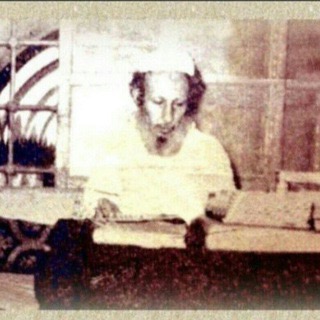`Umar's Camel Conundrum: A Curious Question of Hand Placement
- ibnalsindhi

- Jul 24, 2021
- 2 min read
Updated: May 6, 2023
The earliest source that documents this frequently exploited tradition is al-Tabaqat al-Kubra by ibn Sa`d. He conveys the following, with his route of transmission, from Salim bin `Abdullah bin `Umar:

Translation: "`Umar used to insert his hand into the dabara of a camel and say: I fear that I shall be asked about what is in you."
Salim bin `Abdullah was born during the caliphate of `Uthman bin `Affan. Consequently, a report in which he transmits directly from `Umar ibn al-Khattab would be rendered munqati, or disconnected. This observation is corroborated by Abu Zur`ah. Abd al-Rahman ibn Abi Hatim cites his observation in his Kitab al-Marasil:

Translation: "Abu Zur`ah said: [...] Salim bin `Abdullah on the authority of his grandfather, `Umar ibn al-Khattab, is mursal."
Penultimately, and most notably however, the word 'dabara' does not refer to the anus or backside. The renowned Arabic lexicographer, ibn Manzur, writes in Lisan al-`Arab:

Translation: "Dabara with the harakat: Wound of a creature and animal. The plural is dabar and adbar just like (the words) shajara and (its plural) shajar and ashjar. And Dibir al-Ba`ir with a kasra (its present/future form is) yadburu, (its noun form is) dabran. And (its majhul form) is dubira, (its ism al-tafdil is) adbar, (its feminine form is) dabra and dabra."
Thus, in early hadith literature, the term can be observed to signify the injury sustained by an animal. Consider the following example from Sahih al-Bukhari:

Translation: "The people (of the pre-Islamic period) would think that to perform `umra during the months of Hajj was one of the major sins on earth. And they would also consider the month of Safar as a forbidden (i.e., sacred) month and they used to say: When the dabar of the camel's back heals up (after they return from Hajj) and the signs of those wounds vanish and the month of Safar passes away then (at that time) `umra is permissible for the one who wishes to perform it."
Additionally, this definition was employed by the Twelver Shi'ite scholar, Adil al-Alawi, in his examination of al-Asrar al-Fatimiyya:

Finally, even if one were to accept the reliability of its route of transmission, this report highlights an exceptional virtue of `Umar ibn al-Khattab. It exemplifies his deeply ingrained piety, such that he even feared being held accountable for his treatment of an injured animal. May Allah be pleased with `Umar al-Faruq.
End.




I found a very good refutation in Arabic
https://www.ramy-essa.com/shobohat/shobha.aspx?shobohat=146
Warning ⚠️ Fabrications attributed to Ahlulbayt by the Shia Nawasib:
Ahmad ibn Muhammad has narrated from al-‘Abbas ibn Musa al-Warraq who has said the following: “Abu al-Hassan (a.s), has said that once a group of people visited abu Ja’far (a.s), and they saw him with black dye applied to his hairs. They asked him about it and he (the Imam) said, ‘I am a man who loves women and I pretend before them - Sahih
*Miraat Al Uqool Volume 22 Page 373
The miracle of the Son of Narjis is that he does Mutah but doesn’t give rise to successors:
a guy called Atwa who was a zaydi had an issue with his son being a 12er imami shia. Atwa…
If a Rafidhi accuses Umar of zoophilia then they are Nasibi since they are accusing Ali of it. Any accusation to Umar (as) is an accusation to Ali (as).
twelvershia.net/2019/03/22/ali-al-baqir-and-al-sadiq-authentically-praise-umar/
L
youtu.be/mYzu9LylGkk?si=jIVggCtnt2OPgFCC
If you know Arabic, see what Shia scholars said about the status of anyone who was a student of Ahlulbayt and how it is impermissible to accuse the students of Ahlulbayt. If this is the status of the students of Ahlulbayt one could only imagine that of the students of the master of Ahlulbayt:
youtube.com/playlist?list=PLCHzVkPMzmCeueg5NQhlVoDX57DVJFnZs&si=xkDzRkZ8hitB5KXp